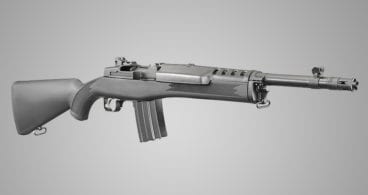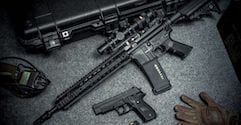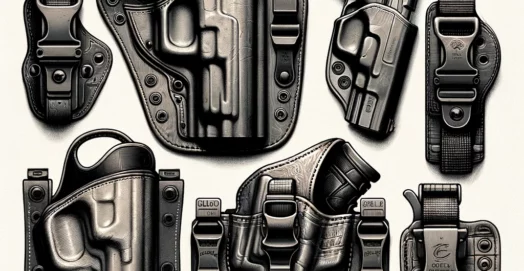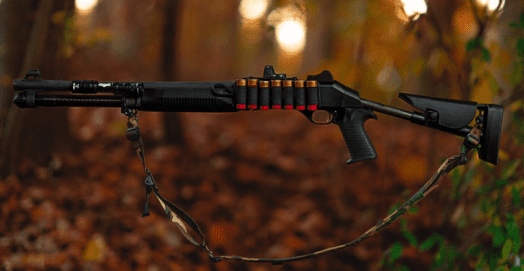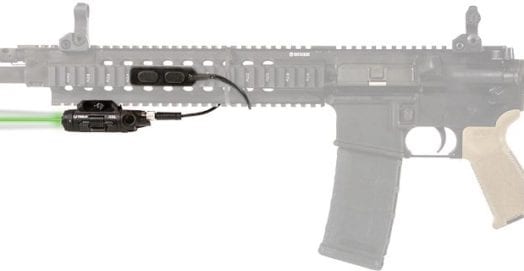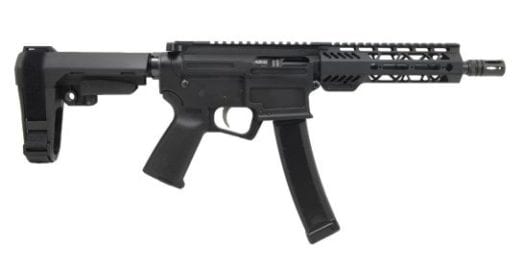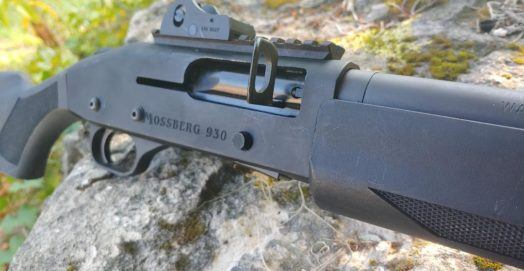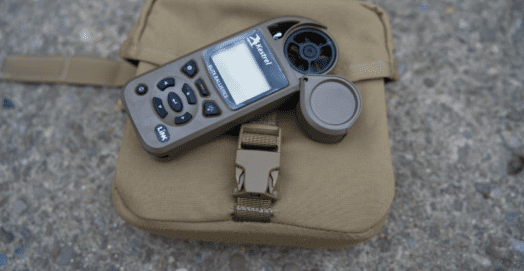Complete Guide on Best AR-15 Upper Receivers

AR-15 Upper Receivers
We’ve talked through AR calibers. We’ve talked through AR lowers. The lowers are the control center for most of the fine-motor skills humans use to interact with their black rifles. Because they’re the serialized portion that the government uses to track sales, lowers get a lot of attention. Above the lower, though, is a really important piece of aluminum: the AR-15 upper.
Inside this piece of aluminum is a tubular-shaped channel that guides the movement of the bolt carrier during recoil and as the bolt returns to battery and loads a new round into the chamber.
The AR-15 upper contains its fair share of moving parts. It is where the barrel attaches to the rifle. In 99% of AR-style rifles, the upper takes the heat of the gasses that drive the action of the gun. At the rear of the upper, the bolt travel extends into the buffer tube.
So imagine, for a moment, the construction. The rounds are exiting the front of the upper. The bolt is slamming to the back and being pushed back in. Cartridges are feeding in from the bottom (which is also open to allow for the movement of the hammer), and brass is ejecting out one side. For such a simple shell, that is a lot of action.
While the AR-15 upper isn’t really doing much itself, it is a fundamental piece of the rifle and the structural tie that holds everything together. So it isn’t something you overlook.
Contents
- AR-15 Upper Receivers
- AR-15 Upper Materials
- Stripped AR-15 Upper Receivers
- Not So Stripped, AKA Complete AR-15 Upper Receivers
- Feedramps
- Retro Style
- The Flat Top
- The Forward Assist
- Brass Deflectors of the AR-15 Upper
- Connecting The Barrel
- The Dust Cover
- AR-15 Uppers for Left-Handed Shooters
- AR-15 Upper Receivers: Parting Shots
AR-15 Upper Materials
Like much of the AR-15, most uppers are made from aluminum. There have been some AR-15 upper receivers made from steel, and some from more unusual materials like the polymer-aluminum hybrids from American Tactical, or the titanium uppers from Republic Firearms.
Those represent two ends of the spectrum, for me. If I were building an ultra-light AR for competition, I would test out a plastic upper. Plastic isn’t as strong as aluminum, though, and not much lighter.
Titanium is lighter and stronger, but it is also much more expensive. Does an upper need to be any stronger? If I were made of money, I’d try out a titanium upper, just to see.
Aluminum works. For my build, I’m using a standard Aero Precision AR-15 Stripped Upper Receiver with a basic black anodized finish. Like the Aero Lower I’m starting with, this upper is machined from 7075-T6 forged aluminum. Solid, dependable, and about as standard as it comes.
Stripped AR-15 Upper Receivers
Nothing but a shell. As I’m building this one from the ground up, I’m doing it all myself. You don’t have to put all of the pieces and parts together, but you can. If you are building this out on a budget, and want to get parts in as money becomes available, then a stripped lower is a fine option.
The other reason why you might want a stripped lower is that this option allows you to customize the remaining parts to your choosing. There’s not much difference in forward assists, but there is a wide variety of options for dust covers.
Not So Stripped, AKA Complete AR-15 Upper Receivers
If you see the phrase “stripped upper,” it means it is missing the internals and the forward assist. A “complete upper” already has a barrel attached. They usually have furniture, sights, and sometimes have a bolt and charging handle, too.
Look at this one from Stag. It is complete, except for the bolt carrier group.
Stag makes another model, the Bare Bones, that is a nice compromise for those who want to avoid some of the build, but not all of the customization of furniture.
For my build, I’m going to assemble everything myself. But you know your DIY level. If you are the type that struggles to paint a room, I’d suggest checking out the assembled options from manufacturers like Stag.
Feedramps
Be careful with what you’re looking at. Some AR-15 upper receivers have feedramps cut into them. This is where you really need to pay close attention to matching parts. The depth on some barrels’ feedramps won’t align with the ramps cut into the upper. If they don’t, you may end up with a lip of steel from the barrel extension that rounds will catch on when you try to chamber rounds.
This all gets even more convoluted when you find that some manufacturers run proprietary feedramps on the barrel extensions that make for larger calibers.
If you are following the basic build styles of government guns, there are two basic distinctions. The M4 upper has feedramps that match up with M4 pattern barrels. The longer rifles, like the A2 pattern rifles, do not have feedramps cut into the upper, but the barrels do.
In other words, you can pair an M4 pattern barrel with an A2 pattern upper. It isn’t optimal, but it shouldn’t pose too many issues. You should NOT pair an A2 rifle barrel with an M4 pattern upper. That’s a jam waiting to happen.
Retro Style
Most of the contemporary AR-15 uppers are similar in shape and style. They have a flat top with sections of Picatinny rail cut in. But that’s not how things have always been.
Early soldiers, or so Armalite thought, would want to carry their rifles in their hands. They built a carry handle into the upper. It also held the rear sight. These sights were adjustable, but not so easily adjusted that a soldier might bump them out of zero during normal use. The rifle wasn’t built to easily mount optics.
While the carry-handle-upper dominates the look of the old M16s, the design didn’t last long. A Picatinny rail makes the rifle far more versatile, and subsequent redesigns have been adding functionality bit by bit.
If you want to you can add a carry handle to a flat-top upper. Aero, and others, make add-ons.
Palmetto State Armory makes one, too.
The Flat Top
The flat tops, though, are clearly the most popular.
There’s not a tremendous amount to add here. Picatinny rails are the most common. Most are barely elevated over the top of the upper. This means you’ll need some sort of elevation for optics. It is never too early to think about how you plan on topping your gun, but most uppers have just enough real estate up top to allow for an optic and a back-up sight.
If you want more from your AR-15 upper, and you’re thinking ahead, consider how it will pair with your forend. Some pairings allow for a long, continuous rail that covers most of the length of the gun.
The Forward Assist
I’d say you need one. This is hardly controversial, but some manufacturers make uppers without forward assists.
This is simply a plunger stuck in at an angle. When the AR gets dirty, a round may stick. When this happens, the blot doesn’t close fully. A quick whack on the forward assist may be all it needs to push the bolt into battery, and get you back in the fight (or competition).
Remember, if you buy a stripped lower, it won’t have the hardware installed. For a few bucks more, you can buy a lower with the forward assist in place.
Without a forward assist, you will need to clear any rounds that end up jammed. This isn’t complicated, but it requires multiple steps (dropping the mag, racking a couple of times, reinserting the mag, dropping the bolt again…).
But some of the AR-15 upper receivers without assists do look sharp,like this Master of Arms matched set.
Brass Deflectors of the AR-15 Upper
If you’re completely new to the AR, you might wonder about the bump behind the ejection port on the upper. It is both a speed bump and a deflector. Brass whacks it after being ejected and bounces to the right, or up and right (unless the gun is left-handed).
You can get one without the deflector. These have a nice streamlined look, but I’d suggest, even more emphatically, that you wear a good pair of safety glasses. I’ve talked to numerous shooters, and read threads, and most say the clean-sided ARs still eject to the side, just fine. I’m not convinced, though I have no reason to feel so dubious.
The real appeal in nixing the deflector? Weight. That bump is solid aluminum. It is hardly significant, but when you take off the deflector and the forward assist you will shave off an ounce or so. Me? I’m not that anal.
Connecting The Barrel
The front end of most lowers is threaded. Barrels slide into place (or can be muscled in). Then a nut comes down and securely tightens the barrel to the AR-15 upper. An extension slides into the upper, adding strength and (as we mentioned above) feedramps.
On the standard build, this is all it takes. Barrels can be swapped at will, though it takes some time to make a switch. But a rifle can be changed to meet individual needs.
Note that I said, “can be changed.” That doesn’t mean that you will want to. The barrel connects to the upper and is held secure by a barrel nut. That nut has to be tightened to a specific torque level. Many AR-15 owners consider it way too much trouble.
The better option, for most of us, is to have multiple complete uppers with different barrels. Caliber conversions are easier this way. Barrel lengths are easier to modify this way. It is more expensive but insanely easy. Simply pop the pins, swap out the bolt as needed, and reattach.
The Dust Cover
Nothing magical about this decision. I’d say you need a dust cover, too. The appropriately named device covers up the ejection port so dust can’t get in (as easily).
It is a door, hinged on the bottom, that is spring-loaded. It is held in place by a tiny ball detent. When the bolt travels to the rear, it knocks the dust cover open. The door slams down and is out of the way of ejecting brass.
Most dust covers are nondescript, and somewhat of an afterthought. The ones that stand out do so because of something really unique. This is mostly a saying of some sort that reads one way when the dust cover is closed, but another when it’s open. “Molon Labe,” for example, or “Mer” and “Ica.” Sayings are often split up, as the inside of the cover is interrupted by the catch.
Dust covers are typically aluminum, and thus anodized—like the rest of the gun. If you’re going to get creative, you can have one engraved or painted with Cerakote.
Strike Industries even makes a polymer cover that they call the Ultimate Dust Cover. It reportedly seals tighter than an aluminum cover.
AR-15 Uppers for Left-Handed Shooters
Right-handed uppers spit out brass to the right. If the gun is on your right shoulder, or on your chest, this isn’t really an issue. Some lefties want a gun that spits to the left. They’re very rare in off-the-shelf configurations, but they’re out there. Here’s one from Stag.
Proprietary Designs
Almost all of what we’ve discussed so far are standard deviations and commonalities of the AR platform. This isn’t always the case. Covering each of these deviations would be a Herculean task.
Some companies make pieces and parts that look like they might fit within the pantheon of AR-15 parts. They aren’t. One of the most common adjustments is the piston-operated upper. Look at whatPWS is doing with those.
Piston ARs use the basic operating system of the AK platform to drive the bolt. This keeps the inside of the upper cleaner than direct impingement. While parts of these guns are modular, the uppers and gas systems are not.
Other companies are trying hard to build AR-pattern guns that can swap calibers quickly. Some even use quick-change connectors and detachable mag wells to make this process possible. The MGI Hydara is an interesting example.
As they do so, the technology evolves. This is a brilliant process and produces some great new guns, but the evolution takes away from modularity, usually, so be cautious.
AR-15 Upper Receivers: Parting Shots
As I mentioned in the article on AR-15 lowers, I trust modularity. Even so, I trust that parts and pieces from the same company are more likely to fit perfectly.
While the AR-15 has a storied history that is built on cooperation, companies have little incentive to play nicely. In many instances, these companies develop small proprietary changes (like ways of mating barrels to uppers, or even the size of ejection ports) that keep customers coming back for more. Others, like Sig, borrow the basics and build their own beasts, like the MCX.
https://www.wmdguns.com/firearm-coatings.html
AR-15 upper receivers are easy to find, and even the most basic will work. Engravings, finishes, colors…. All of that is gravy.





